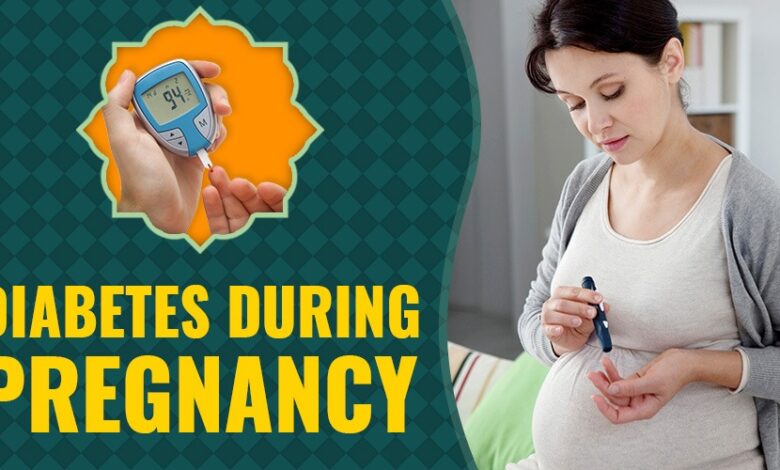Pregnancy and Diabetes Management: Essential Health Insurance & Nutrition Tips Every Mother Should Know

Pregnancy is one of life’s greatest blessings, but it can also be one of its most complex journeys—especially when diabetes comes into play. For expectant mothers dealing with Type 1, Type 2, or gestational diabetes, every decision matters. The food you eat, the steps you take, and even the kind of health insurance you carry all shape the outcome for you and your baby. While pregnancy naturally brings about massive hormonal changes, diabetes management requires extra diligence to keep both mother and child safe.
But here’s the good news: with proper planning, education, and consistent monitoring, mothers can thrive during pregnancy and protect their babies from complications. Across Africa and Europe, where access to healthcare and nutrition varies, the principles of smart management remain universal. This article offers a deep dive into everything an expectant mother needs to know about balancing pregnancy and diabetes—from diet, exercise, and emotional health, to financial preparedness with tools like insurance.
Think of this as your complete roadmap. By the end, you’ll understand how to safeguard your health, nurture your baby, and make informed choices. Let’s get started.
Read Also Keto Diet for Gestational Diabetes: Safe Low-Carb Meal Plans for Pregnant Women
Understanding Diabetes During Pregnancy
Pregnancy is already a state of increased insulin resistance, but when diabetes is added to the equation, risks can multiply. Diabetes in pregnancy can be classified in three main ways: pre-existing Type 1, pre-existing Type 2, and gestational diabetes. Each carries its own risks and management protocols, but the goal remains the same: keeping blood sugar within target range.
Type 1 diabetes, an autoimmune condition, requires insulin management before, during, and after pregnancy. Type 2 diabetes often comes with additional health challenges like obesity or hypertension, which complicates pregnancy further. Gestational diabetes develops during pregnancy and usually resolves after delivery, but it increases the likelihood of Type 2 diabetes in the future.
The challenge is that pregnancy hormones, especially in the second and third trimesters, naturally make insulin less effective. For a woman without diabetes, her body compensates by producing more insulin. But for diabetic mothers, this compensation is impaired. As a result, high blood sugar levels can affect fetal development, leading to larger babies (macrosomia), premature birth, or breathing difficulties after birth.
It’s not just about blood sugar either. Poorly controlled diabetes can increase risks of miscarriage, preeclampsia, and birth defects. That’s why understanding your unique type of diabetes and working closely with healthcare professionals is essential from the very beginning.
Why Diabetes Management in Pregnancy Is Critical
Why should mothers worry so much about controlling diabetes during pregnancy? The answer lies in both short-term and long-term outcomes.
In the short term, uncontrolled diabetes can lead to dangerous complications like stillbirth, excessive amniotic fluid (polyhydramnios), or neonatal hypoglycemia (when the baby’s sugar crashes right after birth). For the mother, risks include preeclampsia (a life-threatening spike in blood pressure), early delivery, or cesarean section.
In the long term, poor management can set both mother and child on a path toward chronic health issues. Babies exposed to uncontrolled diabetes in the womb face higher risks of obesity, metabolic syndrome, and Type 2 diabetes later in life. For the mother, complications like kidney damage, vision problems, or cardiovascular disease can accelerate post-pregnancy.
On the flip side, well-managed diabetes paves the way for healthier pregnancies. With the right mix of diet, exercise, monitoring, and medical guidance, mothers can reduce risks dramatically. The benefits extend beyond physical health too. Mothers who manage their diabetes feel more empowered, less stressed, and more in control of their journey.
Ultimately, managing diabetes during pregnancy isn’t just about preventing illness—it’s about creating a future where both you and your baby thrive.
The Role of Diet in Pregnancy and Diabetes Management
Nutrition is the cornerstone of diabetes management, and during pregnancy, it becomes even more important. Every bite you take not only fuels your body but also nurtures your baby.
For diabetic mothers, the first rule of diet management is balance. Carbohydrates should come from complex sources like brown rice, beans, whole wheat bread, and vegetables. These release glucose slowly, preventing dangerous spikes. Refined carbs like white bread, pastries, or sugary drinks should be avoided. Instead of three heavy meals, nutritionists recommend five or six smaller meals spread throughout the day.
Protein is another critical component. Foods like eggs, fish, lean meat, and plant-based proteins help regulate blood sugar and support the baby’s development. Healthy fats—found in avocados, nuts, and olive oil—further improve satiety and help balance glucose levels.
In African diets, staples like yam, cassava, and maize dominate. While these can spike blood sugar, they don’t have to be eliminated. Simple swaps—such as mixing yam with vegetables or replacing part of the maize with beans—make them safer. In Europe, diets may include more dairy and bread, which should be carefully portioned.
Hydration also plays a major role. Water should be your main drink, while sodas, fruit juices, and alcohol are best avoided. Pairing hydration with fiber-rich meals helps prevent both constipation and blood sugar fluctuations.
Ultimately, working with a dietitian creates a personalized meal plan. This ensures you meet calorie needs for pregnancy while keeping diabetes under control.
Exercise: A Safe Weapon Against High Blood Sugar
Exercise may feel daunting during pregnancy, especially if you’re already managing diabetes, but it’s one of the most effective tools you have. Light to moderate physical activity improves insulin sensitivity, helps stabilize blood sugar, and supports healthy weight gain.
Safe exercises include walking, swimming, and prenatal yoga. Even 30 minutes of brisk walking a day can make a dramatic difference. In Africa, where walking to markets or schools is common, daily movement already provides natural benefits. In European cities, prenatal fitness classes or swimming pools offer structured exercise options.
The key is moderation. Avoid high-impact workouts or anything that risks abdominal injury. Instead, focus on low-impact movements that encourage circulation and reduce stress. Exercise also improves sleep quality, boosts energy levels, and helps regulate blood pressure—critical for women at risk of preeclampsia.
But always consult your doctor first. Each pregnancy is unique, and what’s safe for one woman may not be safe for another. A healthcare provider can help tailor activity levels based on your health and stage of pregnancy.
Remember, exercise doesn’t have to be complicated. Even stretching, dancing lightly to music, or taking stairs slowly can keep your body active. What matters is consistency.
Medical Monitoring: The Foundation of Safe Management
No matter how good your diet or exercise routine is, you need medical monitoring. Diabetes management during pregnancy is too complex to handle alone.
Routine prenatal visits become more frequent when diabetes is involved. You’ll likely undergo regular blood sugar checks, HbA1c testing, urine analysis, and ultrasounds to track the baby’s growth. For high-risk cases, continuous glucose monitoring (CGM) might be recommended. While CGM can be expensive, it’s invaluable in preventing sudden highs and lows.
Doctors may also adjust insulin doses frequently, since insulin needs often increase as pregnancy progresses. Modern insulin delivery systems like pens and pumps make this process easier and less intimidating.
Ultrasounds may be scheduled more often than usual to monitor for macrosomia or other developmental concerns. Blood pressure monitoring is equally critical, as diabetes increases the risk of hypertension and preeclampsia.
The bottom line? Monitoring isn’t a luxury—it’s a necessity. It allows for early detection of problems and timely intervention. Skipping appointments or tests can put both you and your baby at risk.
Health Insurance: A Silent Guardian
Pregnancy with diabetes isn’t just a medical challenge; it’s a financial one. Extra consultations, lab tests, insulin, and potential neonatal care all add up quickly. Without planning, these costs can overwhelm families.
This is where health insurance becomes a lifesaver. In Africa, where public healthcare systems may be stretched, private insurance helps mothers access specialized care. Policies that cover maternity, chronic conditions, and neonatal care are especially important. Some insurers may exclude pre-existing diabetes, but others provide coverage after a waiting period.
In Europe, public health systems cover most costs, but supplemental insurance provides faster access, private room care, or additional benefits like CGM coverage. For international mothers, global health insurance plans can bridge the gap across borders.
When choosing insurance, look for policies that specifically cover:
- Maternity care
- Diabetes management (including insulin and monitoring devices)
- Neonatal intensive care
- Emergency cesarean sections
Having insurance doesn’t just reduce costs; it brings peace of mind. It ensures you can focus on your pregnancy instead of worrying about bills.
Gestational Diabetes vs. Pre-existing Diabetes: Key Differences
Not all diabetes in pregnancy is the same. Understanding the differences between gestational diabetes and pre-existing diabetes is crucial.
Gestational diabetes usually develops in the second trimester and resolves after birth. It happens because pregnancy hormones interfere with insulin function. While temporary, it increases the mother’s risk of Type 2 diabetes later and the child’s risk of obesity or diabetes in adulthood.
Pre-existing diabetes (Type 1 or Type 2) requires more complex management. Type 1 mothers rely on insulin, while Type 2 mothers may use a combination of insulin, oral medications, and lifestyle adjustments. Pre-existing diabetes carries higher risks of congenital malformations since high blood sugar in early pregnancy can affect organ development.
Both types require careful diet, exercise, and monitoring. But pre-existing diabetes often involves more frequent adjustments and tighter control.
The Role of Stress and Mental Health in Diabetes During Pregnancy
<p>Pregnancy already stirs emotions, and adding diabetes makes stress management critical. Stress increases cortisol levels, which can raise blood sugar. Anxiety about complications or financial costs further fuels this cycle.
Mothers should prioritize mental health as much as physical health. Practices like meditation, prenatal yoga, or even simple breathing exercises can calm the nervous system. Talking openly with partners, joining support groups, or seeking counseling helps mothers cope with the unique pressures of diabetic pregnancy.
Mental well-being isn’t a luxury—it’s an essential part of diabetes management. When stress is controlled, blood sugar stabilizes more easily, and both mother and baby benefit.
Medications and Insulin: What’s Safe for Mothers and Babies
Medication safety is a major concern. For gestational diabetes, diet and exercise may suffice, but some mothers need insulin. Insulin does not cross the placenta, making it safe for babies.
Oral medications like metformin are sometimes prescribed but may not be suitable for all cases. Always consult a doctor before making any changes. Self-medicating or skipping doses can harm both you and your child.
Modern insulin delivery devices, such as pens and pumps, reduce anxiety about injections and make compliance easier. Digital apps that track dosage and glucose levels can also simplify the process.
Postpartum Diabetes Management: Life After Delivery
The journey doesn’t end after childbirth. Mothers with gestational diabetes should undergo glucose testing six weeks after delivery, as they remain at high risk of developing Type 2 diabetes.
For mothers with pre-existing diabetes, postpartum adjustments to insulin or medications are common. Breastfeeding also impacts sugar levels, often lowering the need for insulin. Monitoring continues to be essential during this phase.
Long-term, adopting a healthy lifestyle with balanced diet, regular exercise, and stress management reduces risks.
Regional Differences: Managing Pregnancy and Diabetes in Africa vs. Europe
Access to healthcare varies widely across regions. In Africa, limited access to specialists, high cost of insulin, and cultural dietary habits pose challenges. Community clinics and education campaigns are crucial in bridging this gap.
In Europe, advanced healthcare systems, insurance coverage, and access to technology like CGM make management easier. However, cultural diets high in bread and dairy may still challenge blood sugar control.
Regardless of geography, the principles remain the same: diet, monitoring, and access to care determine outcomes.
Technology and Apps for Tracking Pregnancy and Blood Sugar
Technology has revolutionized diabetes care. Apps for glucose monitoring, digital diet trackers, and telemedicine consultations make management easier. CGMs and insulin pumps connected to smartphones provide real-time alerts, reducing risks.
In Africa, affordable mobile health apps are emerging, making education and monitoring accessible even in rural areas. In Europe, integration with healthcare systems ensures doctors receive real-time updates from patients.
Community Support and Coaching: Why You Don’t Have to Do It Alone
Pregnancy with diabetes can feel isolating, but you’re not alone. Support groups—online or in-person—provide encouragement and practical advice. Diabetes educators, nutritionists, and coaches offer personalized strategies.
Having family and community support reduces stress, improves adherence to diet and exercise, and builds confidence. Sometimes, emotional support is as powerful as medication.
Baby’s Health: How Maternal Diabetes Affects Newborns
Maternal diabetes can impact newborns. Risks include hypoglycemia, jaundice, or respiratory distress. Babies may also be larger, increasing delivery complications.
But with controlled diabetes, these risks shrink significantly. Pediatricians often monitor babies of diabetic mothers closely after birth. Breastfeeding also helps regulate the baby’s metabolism and provides lifelong benefits.
Financial Planning Beyond Insurance: Emergency Funds and Savings
Even with insurance, out-of-pocket costs can arise. Setting aside emergency funds ensures you’re prepared for unexpected expenses like NICU stays or extra consultations.
In Africa, where insurance coverage may be limited, building personal savings is even more important. In Europe, supplemental coverage or private plans add another layer of protection.
The Role of Spouses and Family in Diabetes Care During Pregnancy
Pregnancy is not a solo journey. Spouses and families play key roles—helping with diet, reminding about medications, or simply providing emotional support.
When family members understand the risks and responsibilities, mothers feel less burdened and more supported. This shared responsibility improves outcomes for everyone.
Preventive Healthcare: Vaccinations, Supplements, and Prenatal Tests
Preventive care includes more than sugar monitoring. Vaccinations (like flu and tetanus), prenatal vitamins (especially folic acid), and regular prenatal tests reduce complications.
For diabetic mothers, supplements like vitamin D and iron may be especially important. Preventive steps reduce risks long before problems arise.
The Long-Term Outlook: Reducing Diabetes Risks for Both Mother and Child
Managing diabetes during pregnancy has ripple effects. Mothers who adopt healthy habits during pregnancy often continue them afterward. Babies born to mothers who controlled diabetes face fewer risks long term.
The effort invested during these nine months pays dividends for a lifetime—for both mother and child.Pregnancy and Diabetes Management
Conclusion
Pregnancy with diabetes is a unique challenge, but it’s far from impossible. With balanced nutrition, safe exercise, consistent monitoring, financial preparedness, and strong emotional support, mothers can navigate this journey successfully. It all comes down to awareness, action, and the courage to take control. Remember: every healthy choice you make is an investment in both your future and your baby’s.
Read Also Top 10 Diabetes-Friendly Meals That Help Control Blood Sugar Naturally
FAQs
1. Can I have a normal delivery if I have diabetes during pregnancy?
Yes. Many diabetic mothers deliver vaginally if sugar is controlled, though some require C-sections for safety.
2. Is gestational diabetes permanent?
No. It usually resolves after birth but increases future risk of Type 2 diabetes.
3. Can diet alone control diabetes during pregnancy?
Sometimes. For mild cases, yes. But others may require insulin alongside dietary changes.
4. How does diabetes affect my baby?
Uncontrolled diabetes can cause larger babies, early delivery, or breathing issues. Good control minimizes risks.
5. Should I get health insurance before pregnancy if I have diabetes?
Absolutely. Insurance ensures financial protection for both routine care and emergencies.




